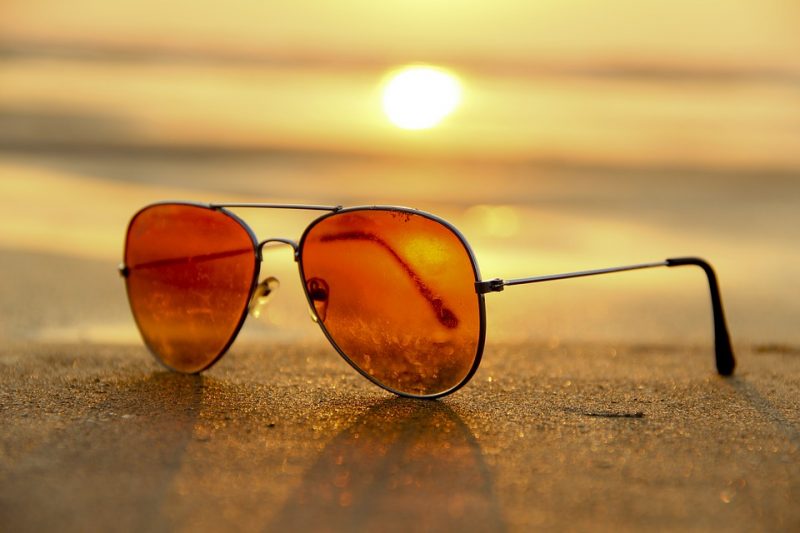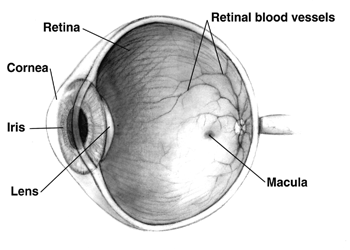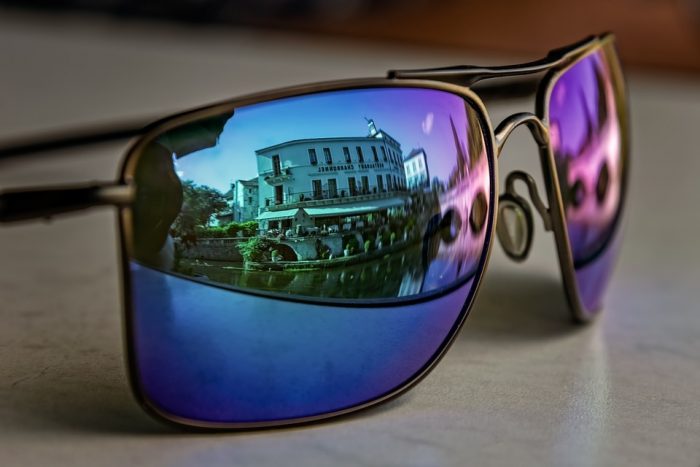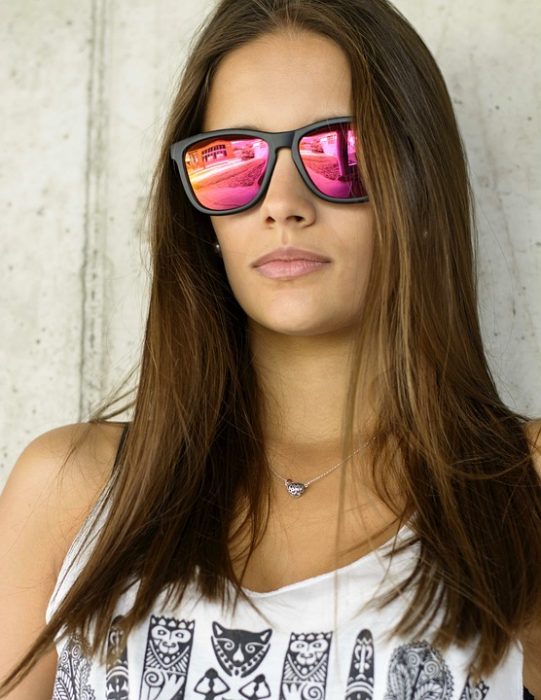
If you’ve stopped by a store and looked all the various sunglasses that are for sale, you’ve probably noticed that there are many different labels on sunglasses advertising a variety of techniques used to block out the sun and protect your eyes.
One of the more notable differences between types of sunglasses is that some are polarized and some are not. How do polarized sunglasses work?
The Polarization Of Sunglasses
To answer the question of how polarized sunglasses work, it would be helpful to know a little bit about how the light from the sun works. Light travels in waves that can twist and undulate in different directions – up, down, or side to side. Think of a string or a rope being plucked and vibrating differently depending on how it is held. The direction that the light waves vibrate in corresponds to the polarization of the light.
So we know that it is possible for light waves to be polarized, or vibrate in different directions. We also know that it is possible to block waves of light with certain materials. Polarized sunglasses work by intercepting/blocking waves of light that vibrate in certain ways. Specifically, polarized sunglasses are designed to intercept light waves that are vibrating horizontally. These horizontal waves of light are the ones that are responsible for glare.
Glare primarily comes from light that vibrates horizontally. Light which has bounced off of a surface, like a road or the side of a building, is usually vibrating sideways when it enters your eyes. Polarized sunglasses reduce the glare from the environment around you by intercepting this horizontal light. You may be able to see this for yourself if you take off a pair of polarized sunglasses and turn them vertically before looking through one of the lenses. The glare spots should reappear because the material designed to block the horizontal wavelengths has been turned sideways and the light gets through.
Other Techniques To Block Light
Beyond the polarization of sunglasses material to block out certain types of vibrating light, sunglasses manufacturers also use other techniques to protect the eyes from light and ultraviolet radiation. Other features of sunglasses can include: tinting, photochromic lenses, mirroring, scratch resistant coatings, UV coatings, and anti-reflective coatings.
Tinting
Sunglasses can be tinted various colors to help absorb the different parts of the light spectrum. The most common tints are grey tints, as they are good for all-purpose absorption of light and give the glasses decent protection against glare. They also distort colors the least.
Yellow tints are used to reduce the amount of blue light that hits the eyes, and it is why the glasses that snowboarders and skiers use are usually yellow. The downside is that yellow tints reduce color perception.
Tints that are brown or amber colored are excellent at reducing layer and absorbing not only UV light but those higher frequency colors such as violet and blue, which can contribute to macular degeneration and cataracts. As a drawback, blue tinted sunglasses also reduce color perception. Green tinted lenses can also prove effective at filtering out blue light and cutting down on glare. Green tints frequently offer good visual acuity and high contrast.
Photochromic Lenses
Photochromic lenses are those that darken when exposed to sunlight. These lenses are often referred to as transition lenses, and use special chemical reactions that react to UV radiation. Photochromic lenses are created with substances like silver halide and silver chloride embedded in them, and these substances change shape when they are hit with UV radiation. This altered chemical structure is capable of absorbing portions of the visible light spectrum. The more UV radiation hits the lenses, the higher the number of molecules that will change shape.
Mirroring
Mirrored sunglasses or reflective sunglasses have a very thin reflective coating applied to the glasses. This is sometimes called a half-silvered coating, and it references the fact that approximately half the molecules that are required to make the glasses opaque are used in coating the glasses. In practice, this means that the surface of the sunglasses reflects back about half of the light that hits the lenses. Mirror coatings are frequently constructed with gradients that change concentrations from top to bottom. This is done because the most of the light that gets into a person’s eyes will be coming from above them, yet the light that is coming at them from straight ahead or below them is more necessary to see with.
Scratch-Resistant Coats
Unfortunately, mirrored sunglasses are easily scratched, which frequently ruins the mirror layer. Sunglasses are scratch resistant underneath the reflective coating that is applied to the outside. Sunglasses are not actually made of glass, they’re made of plastic. Most plastic is not scratch resistant, and for this reason, sunglasses can be scratched easily unless they are made with scratch resistant coatings.
UV Coatings
Most major eye problems are linked to exposure to ultraviolet light. Ultraviolet light is typically divided into two different categories: UVA and UVB. These categories reflect the different wavelengths and frequency of the ultraviolet light, with UVA being a longer wavelength than UVB light. While most ultraviolet light is absorbed by the ozone layer, some of it reaches down to the Earth’s surface where it can harm our skin and eyes. The shorter the wavelength, the more dangerous the radiation is. The cornea of the eye is naturally capable of absorbing the UVB light and the majority of the UVA lights that contacts it, giving you the eyes some natural defense against the harmful effects of ultraviolet radiation. However, there is a small amount of UVA light that penetrates through to the lens of the eye.
The effects of this UVA light absorption over time can lead to a condition called cataracts, which is the clouding of the lens and is one of the primary causes of blindness. To protect the eyes, sunglasses frequently have a coating that blocks UV radiation. Be aware that not all sunglasses are created equal, so when you buy a pair of sunglasses check to make sure that the glasses are capable of protecting you from both types of UV radiation and that they filter out 100% of the UV radiation.
Antireflective Coatings
A problem that wearers of sunglasses often experience is referred to as a back glare. This is in reference to light that contacts the rear portion of the lenses and reflects off of them into the wearer’s eyes. To combat this, some types of sunglasses have antireflective coatings. This is a thin yet hard layer of material applied to the lands. The material is capable of reflecting an amount of light approximately equal to the amount of light reflected from the outer surface of the sunglasses. This means that the two reflections from the opposite side of the lenses essentially cancel out one another and the glare that the wearer sees is minimized.
Why Wear Sunglasses?
Much like one would wear sunscreen to protect their skin from ultraviolet radiation, sunglasses will protect the user’s eyes from ultraviolet rays. It is especially important that you wear sunglasses to protect your eyes if you suffer from certain eye conditions that can enhance the likelihood your eyes will be damaged by UV rays. Conditions like retinal dystrophy and macular degeneration both put your eyes at greater risk for damage when exposed to the sun.

By NIH National Eye Institute – [1], Public Domain, https://commons.wikimedia.org/w/index.php?curid=267708
Macular degeneration refers to the deterioration of the retina, though unlike retinal dystrophy it’s not necessarily inherited. Rather, age-related macular degeneration is caused by a number of different factors, both environmental and genetic, and manifests itself most prominently in people over the age of 60. There are two primary forms of age-related macular degeneration, wet form and dry form. Wet form macular degeneration refers to the fact that blood vessels abnormally grow underneath the macula, leaking fluid into the retina and leading to the distortion of vision. The dry form of macular degeneration is characterized by yellowish deposits dubbed drusen appearing in the macula, and as the numbers of drusen grow, they lead to an increasing distortion and a dimming of vision. The dry form of macular degeneration is the most common form of the disease. While there is no cure for macular degeneration, it can be managed by a combination of medications, laser therapy, vitamins, and vision aids.
It is thought that sunglasses which wrap around the face provide better protection from UV light than glasses that don’t wrap around, so if you are aiming to protect your eyesight as best you can, invest in wrap-around sunglasses.










